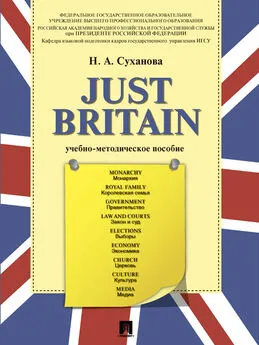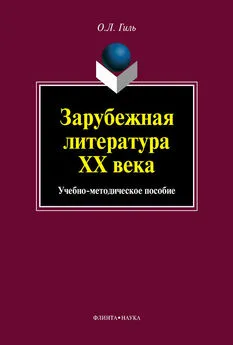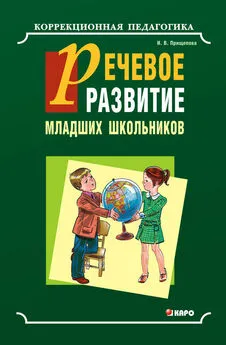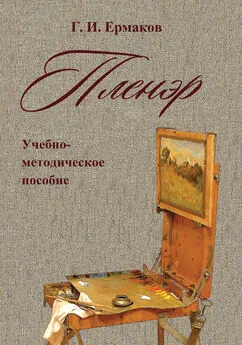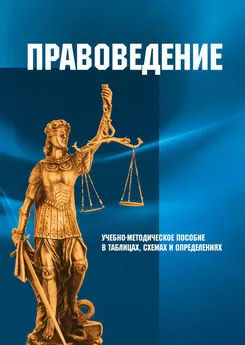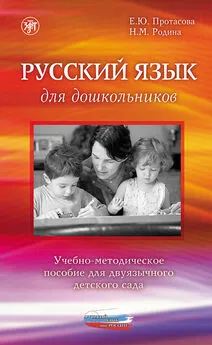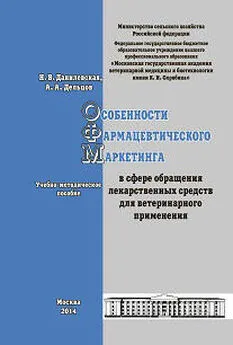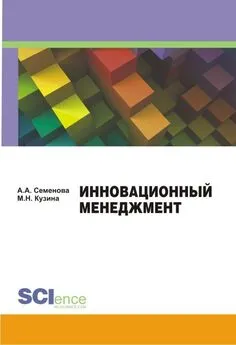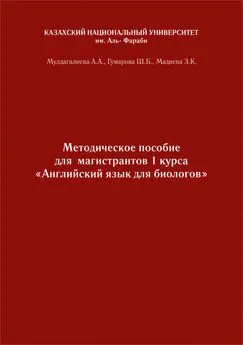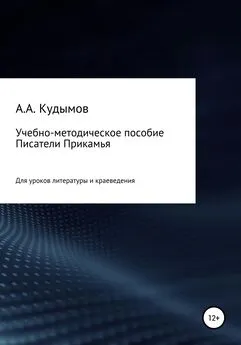Надежда Суханова - Just Britain. Учебно-методическое пособие
- Название:Just Britain. Учебно-методическое пособие
- Автор:
- Жанр:
- Издательство:Литагент Проспект (без drm)
- Год:2015
- ISBN:9785392175581
- Рейтинг:
- Избранное:Добавить в избранное
-
Отзывы:
-
Ваша оценка:
Надежда Суханова - Just Britain. Учебно-методическое пособие краткое содержание
Just Britain. Учебно-методическое пособие - читать онлайн бесплатно ознакомительный отрывок
Интервал:
Закладка:
BRITISH ROYAL RESIDENCES
The Sovereign’s official residence in London is Buckingham Palace. It is the site of most state banquets, investitures, royal christenings and other ceremonies. Another official residence is Windsor Castle, the largest occupied castle in the world, which is used principally at weekends, Easter and during Royal Ascot, an annual race meeting that is part of the social calendar. The Sovereign’s official residence in Scotland is the Palace of Holyroodhouse in Edinburgh. The monarch stays at Holyrood for at least one week each year, and when visiting Scotland on state occasions.
Historically, the Palace of Westminster and the Tower of London were the main residences of the English Sovereign until Henry VIII acquired the Palace of Whitehall. Whitehall was destroyed by fire in 1698, leading to a shift to St James’s Palace. Although replaced as the monarch’s primary London residence by Buckingham Palace in 1837, St James’s is still the senior palace and remains the ceremonial Royal residence. For example, foreign ambassadors are accredited to the Court of St. James’s, and the Palace is the site of the meeting of the Accession Council. It is also used by other members of the Royal Family 2 3 4 5 6.
TASKS
1. Find the following words and word combinations in the text and translate them into Russian. Think of possible explanations of the notions. Pay attention to prepositions.
– constitutional monarchy
– to undertake various official ceremonial duties
– to be limited to non-partisan functions
– to bestow honors and appoint
– monarch’s royal prerogative
– to exclude from succession to the throne
– to be merged to create the kingdom
– to secede from the union
– to recognize the evolution of the dominions
– uncodified constitution
– God Save the Queen (national anthem)
– to exercise sovereign powers
– to command the support of the House of Commons
– to take office by attending the Monarch in private audience
– to known as the royal prerogative
– to act within the constraints of convention and precedent
– to exercise prerogative on the advice of ministers responsible to Parliament
– as a constitutional ruler
– to ultimately accept the decisions of the Prime Minister
– official residence
– the site of most ceremonies
– ambassadors accredited to the Court of St. Jame’s
2. – Give the general meaning of the word Monarchy. How do you understand it?
– What other monarchies do you know? What continent are they located on? Was the situation the same along the whole history of mankind?
– Is the monarchy a tradition or could it be considered as system chosen by the people themselves?
– Does the queen rule alone? What is the main governing body in the UK?
– Why do some people think that the institution of monarchy is undemocratic?
– How is the monarch involved in Parliament’s activities?
– Speak about the ceremony of the Prime Minister’s taking office. Is it a matter of rule or tradition?
III. Royal family
Queen Elizabeth II
Princess Elizabeth Alexandra Mary was born in London on 21 April 1926; she was educated privately, and assumed official duties at 16. During World War II she served in the Auxiliary Territorial Service, and by an amendment to the Regency Act she became a state counsellor on her 18th birthday. On the death of George VI in 1952 she succeeded to the throne while in Kenya with her husband and was crowned on 2 June 1953.
The reign of Queen Elizabeth II since 1952 has spanned a period of rapid and occasionally turbulent change. Britain’s position in the world, her economy, and the very shape and structures of society have all been transformed and many traditional institutions have suffered in the process. Through all this, the path of the Crown has been marked out by The Queen herself, in a prolonged display of unwavering devotion to duty and quiet pragmatism which has met a nationally-felt need, and has won her the unstinting respect and affection of her peoples. As hereditary head of state for Great Britain and Northern Ireland, The Queen has symbolic and formal functions and duties but no direct powers. She is an embodiment of national identity and continuity and, with her family, performs countless formalities to mark events in the lives of individuals and communities and provides valuable patronage for innumerable charities.
Supported by Prince Philip, Duke of Edinburgh, to whom she was married on 20 November 1947, The Queen is head of a large family. The first child of the royal marriage and the current heir to the throne is Prince Charles, the Prince of Wales, who was born on 14 November 1948 and was invested as Prince of Wales at Caernarvon Castle on 1 July 1969. He married Lady Diana Spencer (Princess Diana) on 29 July 1981; two sons were born to the marriage, Prince William, born 21 June 1982 and Prince Henry (Prince Harry), born 15 September 1984. However, the marriage broke down amid widely-publicized bitterness, and a divorce followed. These troubles, together with the divorces of Princess Anne and the Duke of York, were seen by some to diminish the monarchy in public esteem. The death of Diana, Princess of Wales on 31 August 1997 in a car crash in Paris unleashed a wave of hysteria stirred up by the media, and the family have had to suffer relentless intrusion by the world’s press into their lives.
Elizabeth II is now the longest reigning British monarch since Queen Victoria, and The Queen’s Golden Jubilee in 2002 was celebrated with enthusiasm and great displays of loyalty. The Prince of Wales, after suffering a period of unpopularity, has shown resilience and willingness to meet the public half-way in its new mood. His long-established concern for the disadvantaged sections of society enables him to meet on common ground many who might be put off by grandeur and pomp, while his evident devotion to his two sons has won him a real measure of respect. Prince Charles’s willingness to accept change is reflected, too, throughout the institution of the monarchy. This has altered significantly in recent times with The Queen’s decision to pay tax, changes being made to the Civil List, and the opening of Buckingham Palace to the public to help fund the restoration of Windsor Castle. Debate about the future of the monarchy continues, but the Royal Family has shown itself willing to contemplate evolutionary change, and the Crown of Britain has entered the twenty-first century with renewed vigor and fresh purpose.
The Queen’s Christmas Message in 3D
Queen Elizabeth’s annual royal Christmas message has become as traditional as Christmas itself, with families huddling around their TV sets after tucking into a hearty roast lunch anxiously awaiting to hear what her majesty has to say as she reflects on the year.
But this year is a first for the 86-year-old monarch as her Christmas day message has been filmed in 3D. The queen watched a sneak peak preview of her broadcast wearing dark glasses complete with a Q made out of glittering Swarovski glasses worthy of a rock star.
This year the message contains the impact of the London 2012 Olympic Games saying “all those who saw the achievement and courage at the Olympic and Paralympic Games were further inspired by the skill, dedication, training and teamwork of our athletes.”
Just like every other Christmas, her majesty is at her Sandringham Estate with husband Prince Philip and other members of the royal family where they usually spend Christmas, but breaking with tradition this year the second in line to the throne, Prince William and wife Catherine, will not be spending the festive day with them. Instead they’ll be at home with the prince’s in-laws, the Middleton’s, at their home in the quaint and bucolic village of Bucklebury.
In a statement, the palace said the Duke and Duchess of Cambridge plan to attend Sandringham at some point in the Christmas period.
Meanwhile, the queen is said to be recovering from a cold and was forced to miss the Sunday church service disappointing dozens of well wishers who had gathered outside the church to catch a glimpse of her.
Prince Philip did attend the service along with some members of the royal family including Prince Andrew, Princess Beatrice and Princess Eugenie.
(BBC UK News, 25 December 2012)
Diamond Jubilee
The Queen has become the first monarch since the 18th century to attend Cabinet on a special visit to mark her Diamond Jubilee. The monarch was met by Prime Minister David Cameron on the steps of Number 10, which has been covered with a red carpet for the occasion. She wore a deep blue coat and matching dress by Stuart Parvin – immediately dubbed “Thatcheresque” by commentators. The Queen made the trip without Prince Philip to collect a present bought by the Secretaries of State to mark her 60-year reign. Cabinet members clubbed together to buy her a set of 60 placemats – one for each year she has spent on the throne. The mats, which are bespoke and show traditional images of Buckingham Palace, were suggested by the Queen’s own aides and made by a Gloucestershire company called Lady Clare Limited.
Officials refused to disclose the value of the gifts. An unspecified donation was also made to the Diamond Jubilee Trust.
The Prime Minister dismissed warnings from some quarters that the Queen was crossing a constitutional line by attending the Cabinet.
“We are her Cabinet, we operate for her. She was set in the seat where the Prime Minister traditionally sits and, given it’s her Cabinet, she can come any time she wants,” he said.
Sky’s royal commentator Alastair Bruce said: ”It is significant because in the Queen’s Diamond Jubilee year it puts a focus on what headship of the state is all about and that is supervising the democratic process.”
The Foreign Office has also announced that the southern part of British Antarctic Territory is to be named “Queen Elizabeth Land” to mark the jubilee. The region is a barren, landlocked ice and snow-covered area uninhabited by people and virtually devoid of animal life.
Ministers lined up to shake hands with the monarch before they all went into the final Cabinet of the year. The Queen took her chance during the meet-and-greet to quiz George Osborne about Britain’s gold reserves. She then sat between Mr. Cameron and Foreign Secretary William Hague for her half-hour stint at the famous Cabinet table. The Queen is thought to be the first monarch to attend Cabinet since George III in 1781, despite earlier claims Queen Victoria did so. She only stayed for the first section before leaving ministers to their discussions and moving on the Foreign Office. During the meeting, Mr. Cameron offered her a “very warm welcome” and congratulated her “on a fantastic jubilee year”. He said Downing Street had researched the last monarch to visit Cabinet and believe it dates back to the 18th century. George IV, the Queen’s father, met Cabinet during World War II, but apparently did not go to the standard meeting.
Конец ознакомительного фрагмента.
Текст предоставлен ООО «ЛитРес».
Прочитайте эту книгу целиком, на ЛитРес.
Читать дальшеИнтервал:
Закладка:
